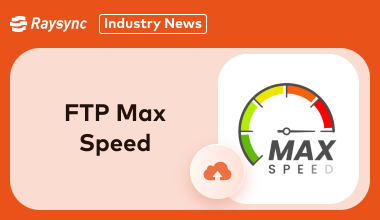Everything You Need to Know about Data Transfer
September 28, 2022The amount of data transferred between global business networks is very large. The amount of data transferred in a given period of time is the data transfer rate, which specifies whether the network can be used for tasks that require complex data-intensive applications.

Network congestion, delays, server operating conditions, and insufficient infrastructure can cause data transmission rates to be lower than standard levels, thereby affecting overall business performance. High-speed data transfer rates are essential for handling complex tasks such as online streaming and large file transfers.
The Importance of Content Delivery Networks
High-quality delivery of websites and applications to as many locations in the world as possible requires infrastructure and expertise to achieve delivery with low latency, high-performance reliability, and high-speed data transmission.
Professional content delivery networks can bring a variety of benefits, including seamless and secure distribution of content to end-users, no matter where they are located. The content delivery network reduces the load of the enterprise's central server by using a complex node system strategically spread all over the world, thereby delivering content through more efficient use of network resources.
Higher data rate conversion can improve user experience and increase reliability. By using intelligent routing, bottlenecks can be avoided (indicating that the amount of data flowing into the network resources is too large to be processed), and adaptive measures can be used to find the best and most successful path in the case of network congestion.
Faster Data Transfer
FTP and HTTP are common methods of the file transfer. For example, FTP can be used to transfer files or access online software archives. HTTP is a protocol used to indicate how to not only define and send messages. It also determines the actions of web browsers and servers in response to various commands. HTTP requests are identified as stateless protocols, which means that they do not have information about previous requests. ISPs provide a limited level of bandwidth for sending and receiving data, which may cause excessive slowdowns that the business cannot afford. Content delivery networks such as CDNetworks provide data transfer speeds up to 100 times faster than FTP and HTTP methods, whether it is transferring large amounts of media files or transferring multiple smaller files.
Transfer Rate
High data transfer rates are essential for any business. To determine the speed at which data is transferred from one network location to another network location, the transfer rate (bits per second (bps)) is used to measure the data. Bandwidth refers to the maximum amount of data that can be transmitted in a given time. One of the most promising innovations achieved by content network services is Tbps (bits per second), which was not imagined until the beginning of the decade
Big Data
According to industry researchers, the amount of data used each year has increased by as much as 40% year-on-year due to the increase in mobile use, social media, and various sensors. Companies in every industry need high-speed data transmission infrastructure more than ever to handle the ever-increasing volume of content from one point to another.
Facing these data transmission needs, Raysync provides professional high-speed file transfer solutions in big data transmission, mainly for large file transfer, massive small file transfer, transnational file transfer, long-distance transfer, breaking through the limitations of traditional file transfer, and improving Bandwidth utilization. As an enterprise file transfer, Raysync has established friendly cooperation with several industry companies. Raysync is worth a chance to try it out.
You might also like

Raysync News
December 25, 2024Uncover the reasons behind slow FTP transfers and learn how to achieve optimal FTP max speed with tips and alternatives like Raysync.

Raysync News
July 8, 2022Raysync has been focusing on providing high-speed file transfer solutions for enterprises since its establishment.

Raysync News
January 22, 2024The use of HIPAA-compliant file sharing tools enhances the protection of sensitive health data in healthcare. This article will take you through an in-depth look at what you need to know about HIPAA and compliant query sharing tools.